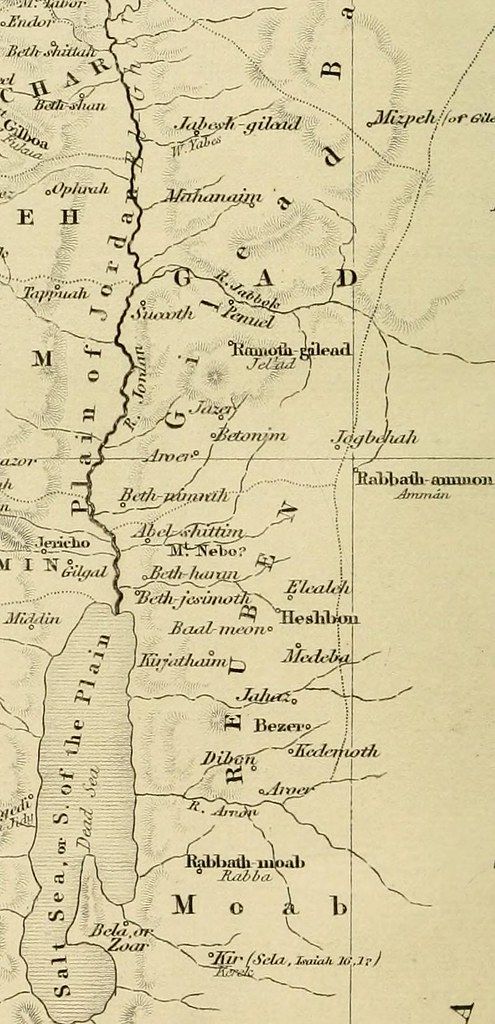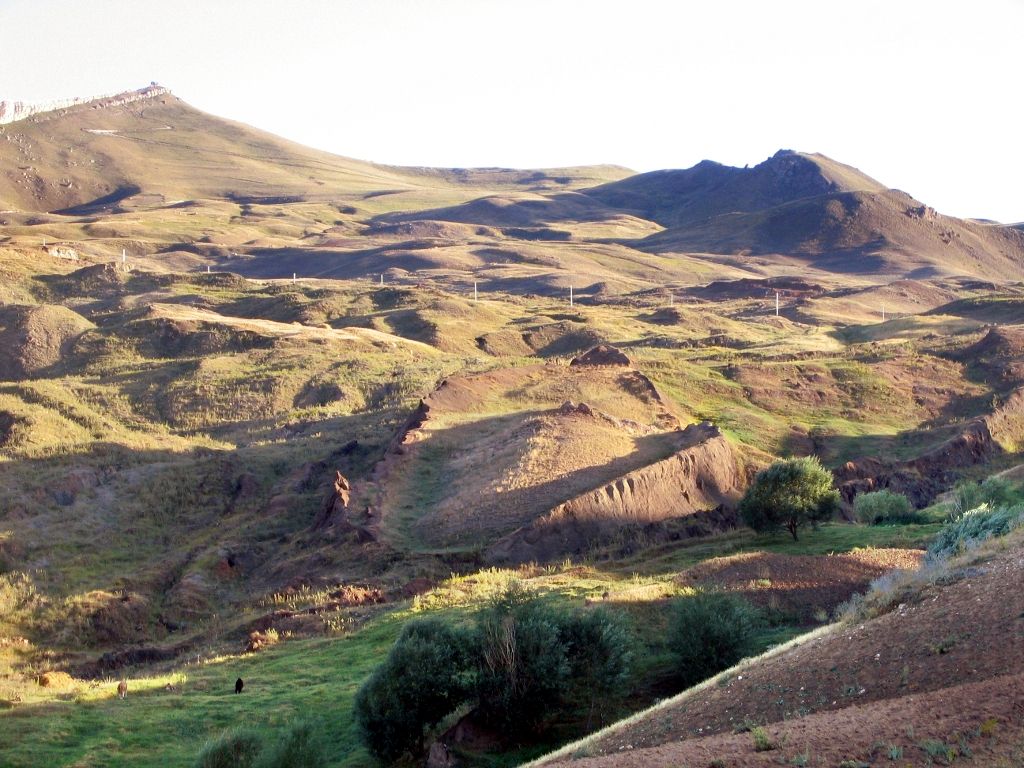
The Bible, revered globally as the written Word of God, stands as an unparalleled instruction manual for humanity, offering profound guidance on how to navigate the intricate tapestry of life. Its pages are rich with divine revelation, timeless wisdom, and narratives that have shaped civilizations. Yet, for all its enlightening power and comprehensive teachings, the Bible also presents us with a fascinating paradox: certain questions, despite centuries of devout study and scholarly inquiry, remain tantalizingly unanswered.
These enigmatic elements within biblical narratives continue to captivate the hearts and minds of believers and scholars alike, serving as enduring puzzles that invite deeper reflection. They are not intended to diminish faith; rather, they are meant to expand our understanding of the divine, prompting a humble acknowledgment of mysteries that transcend human comprehension.
In the spirit of exploration and deep inquiry that defines the pursuit of knowledge, we embark on a journey to explore some of the most compelling of these biblical conundrums. Join us as we delve into these profound mysteries, not with the expectation of definitive resolutions, but with the hope of gaining a richer appreciation for the depth and vastness of God’s wisdom. Through careful examination of the scriptures and various interpretations, we will illuminate the contours of these ancient riddles, understanding why they continue to intrigue and challenge our perspectives on faith, history, and the very nature of existence.

1. **Where is the Garden of Eden?** The Garden of Eden, as vividly described in Genesis, presents a picture of an idyllic paradise, the pristine original home of the first humans, Adam and Eve. It is a place that evokes both profound allure and deep mystery in the human imagination, a symbol of perfect harmony and divine presence. The Bible itself provides tantalizing clues regarding its elusive whereabouts, presenting us with a geographical marker that has fueled centuries of speculation and exploration among scholars and enthusiaasts.
Genesis 2:10 – 14 reveals this crucial detail: “Now a river went out of Eden to water the garden, and from there it parted and became four riverheads. The name of the first is Pishon; it is the one which skirts the whole land of Havilah, where there is gold. And the gold of that land is good. Bdellium and the onyx stone are there. The name of the second river is Gihon; it is the one which goes around the whole land of Cush. The name of the third river is Hiddekel; it is the one which goes toward the east of Assyria. The fourth river is the Euphrates.” This passage indicates its location near the confluence of four rivers: Pishon, Gihon, Tigris (Hiddekel), and Euphrates.
Numerous theories have emerged over time, each attempting to identify this sacred location. Juris Zarins, a prominent figure in these investigations, posits that Eden might be situated at the head of the Persian Gulf, precisely where the Tigris and Euphrates rivers converge into the sea in southern Mesopotamia. Other compelling suggestions place Eden within the Armenian Highlands or the Armenian National Plateau, regions rich in ancient history. British archaeologist David Rohl even ventures to locate Eden in Iran, near Tabriz, although this particular theory has yet to gain widespread acceptance within mainstream academia, underscoring the enduring difficulty in reaching a definitive conclusion.
Further adding to the rich tapestry of possibilities, some scholars propose that Eden was not a single, confined spot but rather a vast region within Mesopotamia, suggesting that its original inhabitants might have continued to reside in cities like Telassar, as hinted by biblical verses such as Isaiah 38:17. This expansive view contrasts with more localized interpretations. Meanwhile, others believe that the Garden could have encompassed the entire Fertile Crescent, a historical region of immense agricultural and cultural significance. Terje Stordalen introduces another intriguing dimension, pointing out that the Book of Ezekiel places Eden in Lebanon. He draws connections between paradise, the Garden of Eden, and the revered forests of Lebanon, as found in prophetic writings, suggesting an alternative location rooted in Phoenician myth. Scholars like Edward Lipinski and Peter Kyle McCarter further contribute to this discourse, proposing a link between the ancient Sumerian analog to the Garden of Eden and a mountain sanctuary nestled within the Lebanon and Anti – Lebanon ranges. While each of these theories offers a unique and thought – provoking perspective, none have been definitively proven, cementing the true location of the Garden of Eden as one of the Bible’s most captivating and persistent mysteries, continually inviting further exploration and contemplation.

2. **Where is Noah’s Ark?** The epic narrative of Noah’s Ark, which details a colossal vessel constructed to preserve life through the cataclysmic Great Flood, stands as one of the most widely recognized and profound biblical tales. The Book of Genesis recounts its ultimate resting place, stating that after the floodwaters gradually receded, the Ark came to rest “on the mountains of Ararat.” This poetic description, found in Genesis 8:3 – 5, highlights a specific period of descent for the waters: “And the waters receded continually from the earth. At the end of the hundred and fifty days the waters decreased. Then the ark rested in the seventh month, the seventeenth day of the month, on the mountains of Ararat. And the waters decreased continually until the tenth month. In the tenth month, on the first day of the month, the tops of the mountains were seen.” This account has inspired countless expeditions over the centuries, with many focusing their intensive search efforts on Mount Ararat in modern – day Turkey.
Despite fervent quests and numerous claims of discovery, conclusive evidence of the Ark’s existence and precise location remains remarkably elusive. There are several profound reasons why finding Noah’s Ark may prove to be an insurmountable challenge, contributing to its status as an enduring biblical mystery. Firstly, the Earth’s landscape has undergone immense and transformative changes over millennia. Relentless tectonic activity, pervasive erosion, and dramatic climatic shifts could have drastically reshaped the very region where the Ark is believed to have settled. The mountains of Ararat themselves, traditionally identified as the Ark’s final resting place, are geologically active, a dynamic environment that could have easily buried or completely destroyed any vestiges of the Ark long ago, rendering its remnants virtually unidentifiable.
Secondly, the biblical description concerning the Ark’s final resting place is notably limited and somewhat ambiguous. Genesis 8:4 simply states that the Ark came to rest “on the mountains of Ararat,” a phrase that does not precisely pinpoint a specific peak or a definitive geographical coordinate. The term “mountains of Ararat” could refer to a much broader area within the ancient kingdom of Urartu, encompassing a vast region that spans modern – day Turkey, Armenia, and Iran, making a precise search incredibly difficult across such a wide and varied landscape. This generalized description significantly complicates any attempt to narrow down a specific search area, spreading search efforts across a wide swath of mountainous terrain.
Thirdly, Mount Ararat itself, the primary focus of many modern searches, presents an extraordinarily harsh and largely inaccessible environment. This majestic mountain soars to over 5,000 meters, with its towering summit frequently cloaked in layers of snow and ice. The prevailing weather conditions are relentlessly severe, characterized by extreme cold, ferocious high winds, and frequent, unpredictable storms, all of which render expeditions perilous and severely restrict the duration and effectiveness of research time. The terrain is equally formidable, rugged, and exceptionally difficult to traverse, further compounding the challenges faced by those hoping to conduct thorough, systematic searches for biblical evidence.
Lastly, and perhaps most critically, there remains a persistent lack of conclusive physical evidence. Despite a multitude of expeditions and various anecdotal reports of sightings, no definitive, scientifically verifiable physical proof of the Ark has been unearthed. While some explorers have asserted the discovery of ancient wooden structures or other intriguing artifacts, these findings have consistently failed to withstand the scrutiny of rigorous scientific authentication methods. Without unimpeachable evidence, such claims, however compelling, remain firmly in the realm of speculation and controversy. Furthermore, assuming the Ark was indeed constructed from wood, its survival over thousands of years is highly improbable. Wood is inherently susceptible to natural decay, particularly when exposed to the fluctuating temperatures and varied environmental conditions characteristic of high mountain altitudes. Unless it was preserved under an exceptionally favorable and unique set of circumstances, any wooden structure, regardless of its original grandeur, would almost certainly have decomposed or been eroded into oblivion over the immense expanse of time. The combination of these formidable challenges continues to make the Ark’s precise location one of the Bible’s most enduring and captivating mysteries.

3. **What happened during Jesus’ ‘missing years’?** The New Testament, the foundational text for the Christian faith, offers an intriguing yet notably sparse account of Jesus of Nazareth’s life between the tender age of 12 and the commencement of His public ministry around the age of 30. This significant period, often referred to as the “missing years” or “silent years,” is marked by a profound narrative void. Following a singular, illuminating episode in which Jesus, as a precocious 12-year-old, is found engaged in deep theological discourse within the Temple, the biblical narrative abruptly fast-forwards to His emergence as an adult prophet and teacher. Luke 2:51 – 52 briefly summarizes this period of growth: “Then He went down with them and came to Nazareth, and was subject to them, but His mother kept all these things in her heart. And Jesus increased in wisdom and stature, and in favor with God and men.” While this verse indicates a period of development, it offers no specific details about the events, travels, or daily life that filled these nearly two decades.
The striking absence of concrete biographical information for such a pivotal figure during what would typically be formative years has naturally fueled extensive speculation and a deep well of curiosity among theologians, historians, and devout believers throughout history. Various theories, some more widely accepted than others, attempt to bridge this informational gap, proposing diverse activities and geographical locations for Jesus during this period. One of the more exotic suggestions posits that He might have embarked on extensive travels to distant and ancient lands, such as India or Egypt. Proponents of these theories often cite obscure historical texts or oral traditions, imagining Jesus learning from spiritual masters or engaging with ancient philosophical traditions in these far – flung regions, absorbing wisdom that would later inform His teachings.
A more grounded and commonly held theory suggests that Jesus likely continued to live a quiet, ordinary life in Nazareth, working alongside His earthly father, Joseph, as a carpenter. This view aligns with the cultural and economic realities of the time, where sons typically followed their fathers’ trades, and it would explain His familiarity with the everyday lives of the people He would later minister to. Within this domestic setting, it is also widely believed that He spent these years in profound spiritual preparation, deepening His connection with God and meticulously preparing for the monumental ministry that lay ahead. This period of quiet maturation, prayer, and study would have been essential for understanding the scriptures and the divine purpose He was to fulfill.
Despite the wealth of imaginative theories and earnest speculation, the Bible remains intentionally silent on these specific years. As the context itself wisely suggests, it is not prudent to be dogmatic on matters about which the sacred texts offer no explicit details. While the allure of uncovering these hidden years persists, the primary message conveyed by scripture seems to be that Jesus’s public ministry, His teachings, His miraculous works, His crucifixion, and His resurrection are the most essential elements for humanity to understand for salvation and spiritual guidance. His growth in wisdom, stature, and favor with God and men during this unrecorded period serves as a sufficient indication of His preparation, leaving the precise details of His daily life and travels a compelling, yet ultimately secondary, mystery for the faithful to contemplate.
4. **What was Paul’s ‘thorn in the flesh’?** The Apostle Paul, a towering figure in the early Christian church and the author of a significant portion of the New Testament, famously speaks of a mysterious and persistent affliction that he refers to as a “thorn in the flesh.” This enigmatic phrase, found in 2 Corinthians 12:7 – 9, describes a source of intense personal suffering that troubled him greatly, even as he was blessed with extraordinary divine revelations. Paul writes: “And lest I should be exalted above measure by the abundance of the revelations, a thorn in the flesh was given to me, a messenger of Satan to buffet me, lest I be exalted above measure. Concerning this thing I pleaded with the Lord three times that it might depart from me. And He said to me, ‘My grace is sufficient for you, for My strength is made perfect in weakness.’ Therefore, most gladly I will rather boast in my infirmities, that the power of Christ may rest upon me.” This passage clearly conveys Paul’s distress and his earnest pleas to God for relief, as well as God’s powerful and comforting response.
The precise nature of this “thorn” has been the subject of extensive debate and scholarly inquiry for centuries, sparking countless interpretations among theologians and biblical commentators. Numerous possibilities have been proposed, each attempting to identify the affliction that so profoundly affected the great apostle. One prominent line of thought suggests that it was a debilitating physical ailment. Among the conditions frequently suggested are chronic conditions such as epilepsy, which could have manifested in unpredictable and distressing seizures, or a persistent vision problem. This latter theory gains some traction from another passage in the Bible, Galatians 6:11, where Paul notably writes: “See with what large letters I have written to you with my own hand!” This particular comment has been interpreted by some as a subtle clue, indicating that Paul might have been suffering from a gradual loss of vision or another form of ocular impairment that made precise handwriting difficult, thus requiring him to write in larger, bolder script.
Beyond physical maladies, other interpretations propose that Paul’s “thorn” could have been a deep psychological struggle, perhaps a persistent battle with depression, anxiety, or even intrusive thoughts. Still others suggest a spiritual struggle, such as intense opposition from false teachers, constant harassment from those who sought to undermine his ministry, or even a personal weakness he continually wrestled with. The phrase “a messenger of Satan to buffet me” further complicates the interpretation, leading some to consider a demonic affliction, though the exact form this might have taken remains undefined within the text.
Ultimately, despite the rich array of theories and the diligent efforts of scholars to unravel this mystery, the Bible deliberately refrains from providing enough explicit detail to conclusively identify the exact nature of Paul’s “thorn.” This intentional ambiguity leaves its precise character open to ongoing interpretation and thoughtful discussion, prompting believers to focus less on the specific malady and more on the profound spiritual lesson it conveys. The most enduring and universally applicable teaching derived from this passage is unmistakably clear: regardless of the specific trials or afflictions that trouble an individual, God’s grace is undeniably sufficient. In moments of profound weakness and vulnerability, it is precisely then that the strength of Christ is made perfect, allowing His divine power to be most clearly displayed through human frailty. This powerful message of reliance on God’s grace in the face of suffering remains a cornerstone of the Christian faith.

5. **Where is the Ark of the Covenant?** The Ark of the Covenant, a sacred biblical artifact, holds immense significance within the narrative of ancient Israel. This revered chest was said to house the very stone tablets inscribed with the Ten Commandments, representing God’s direct covenant with His people. Its presence symbolized divine guidance, protection, and the tangible manifestation of God’s presence among His chosen nation, making its fate one of the most profound and enduring mysteries in all of biblical history. After its last mention during the reign of King Josiah, its subsequent whereabouts became shrouded in an impenetrable veil, leaving scholars and believers to ponder its ultimate destiny.
Over the centuries, countless theories have emerged, each attempting to explain the Ark’s disappearance and current location. Some compelling suggestions propose that it was meticulously hidden away, a desperate measure taken to safeguard it from marauding invaders who sought to defile or seize this holy relic. One widely speculated possibility places it deep beneath the Temple Mount in Jerusalem, a site rich with historical and spiritual layers, where it might remain concealed to this day, awaiting a destined rediscovery. Another intriguing theory suggests a journey far south, positing that it was taken to Ethiopia, an ancient land with deep biblical connections, where some traditions claim it rests in a secluded sanctuary.
Despite numerous ambitious searches and various tantalizing claims of discovery throughout history, no definitive, scientifically verifiable evidence of the Ark’s existence or precise location has ever been unearthed. This persistent absence of concrete proof cements its status as one of the Bible’s greatest unanswered questions, an enduring enigma that continues to ignite the imaginations of archaeologists, theologians, and devout seekers around the world. The mystery of the Ark of the Covenant remains a powerful testament to the layers of untold history still awaiting revelation.

6. **What were the Urim and Thummim?** Among the most intriguing and mysterious artifacts mentioned in the Bible are the Urim and Thummim, enigmatic gemstones carried by the high priest of Israel. These sacred items, whose names translate to “lights” (Urim) and “perfections” (Thummim), were not merely decorative but served a profound purpose: they were divinely – ordained instruments used to discern and understand God’s will in various complex situations. Their presence on the high priest’s ephod, or priestly garments, underscores their vital role in the spiritual and governmental life of ancient Israel; yet the precise mechanism of their operation remains one of scripture’s most captivating puzzles.
The Bible, in its characteristic wisdom, provides limited explicit details about the physical appearance or exact nature of these mysterious stones, leaving much to thoughtful interpretation and scholarly speculation. One theory posits that God Himself might have supernaturally caused these stones to illuminate or light up in specific patterns, thereby revealing His divine decisions or guidance to the high priest. Another compelling suggestion proposes a more tactile approach, imagining that the Urim and Thummim were kept within a pouch, perhaps engraved with distinct symbols or markings representing clear “yes” or “no” answers, or indicating “true” or “false” declarations, which the high priest would then interpret to convey God’s counsel.
While the exact method of their utilization is not extensively detailed within the biblical narrative, their integral role in seeking divine answers is indisputable, as evidenced by their sparse yet significant mentions. They first appear in the detailed descriptions of the breastplate of judgment worn by the high priest in Exodus 28:30 and Leviticus 8:8, highlighting their essential place in priestly regalia. When Joshua assumed leadership after Moses, he was expressly instructed to consult God through the Urim, with the indispensable assistance of Eleazar, the high priest, as recounted in Numbers 27:21. Moses also gives a profound blessing upon the tribe of Levi in Deuteronomy 33:8, underscoring the spiritual authority invested in the Urim and Thummim. Additional allusions in passages such as Joshua 7:14 – 18, 1 Samuel 14:37 – 45, and 2 Samuel 21:1 offer further glimpses into their usage and profound significance, collectively contributing to the rich tapestry of their enduring mystery and leaving ample room for ongoing imagination and reverent interpretation.

7. **What would it feel like to be a spirit being?** The Bible, while rooted in the tangible experiences of humanity, occasionally offers tantalizing glimpses into the ethereal realm of spirit beings, prompting profound reflection on an existence fundamentally different from our own. Through its descriptions of celestial beings like angels and the omnipresent Holy Spirit, scripture hints at a reality where physical limitations are transcended, a state of pure consciousness perhaps, and an intimate, direct connection with the divine. These intriguing but often sparse details ignite our imaginations, inviting us to contemplate the very nature of spiritual existence and the mysteries that await beyond our earthly comprehension.
Jesus, the central figure of Christian faith, provides some of the most profound insights into this elusive concept. In John 3:5 – 8, He speaks metaphorically about being born of the Spirit, drawing a powerful comparison to the wind: “The wind blows where it wishes, and you hear the sound of it, but cannot tell where it comes from and where it goes. So is everyone who is born of the Spirit.” This vivid analogy suggests that spirit beings possess a level of freedom, subtlety, and inherent motion that our physically – bound senses simply cannot fully grasp. They exist and exert influence, yet their precise origins and destinations remain beyond our ordinary perception, highlighting a transcendent reality.
Further compelling insights emerge from the post – resurrection appearances of Jesus, who, in His glorified state, offered a tangible demonstration of spiritual capabilities. Accounts reveal His astonishing ability to pass effortlessly through walls and closed doors, as documented in John 20:19 and 26, utterly unconstrained by the physical barriers that define our world. His majestic ascension to heaven, witnessed by His disciples and recorded in Acts 1:9 – 11, further indicates a capacity for instantaneous travel or movement that defies our understanding of space and time. Moreover, biblical narratives suggest that spirit beings do not require sustenance, are not susceptible to human frailties like fatigue or sickness, and exist in an immortal state, never experiencing death.
These collective descriptions, though not exhaustive, paint a compelling picture of an existence liberated from the constraints of our physical world, imbued with capabilities far exceeding human experience. However, it is crucial to recognize that these are merely glimpses, not a complete, definitive picture. The Bible’s deliberate silence on many specific details regarding what it truly feels like to be a spirit being serves an important purpose: it leaves ample room for our imagination to soar and our faith to deepen, encouraging us to humbly ponder the profound and often unanswerable mysteries of spiritual existence and the eternal afterlife.
The journey through the Bible’s biggest unanswered questions—from the Garden of Eden’s true location to the nature of spirit beings—is not meant to culminate in definitive resolutions, but rather to deepen our faith and appreciation for the divine. These enduring mysteries, whether they concern historical artifacts, the lives of pivotal figures, or the very essence of spiritual existence, serve as powerful reminders of the vastness of God’s wisdom and the inherent limitations of human comprehension. They encourage us to trust in God’s sovereign timing, knowing that some answers may be revealed in this life, while others patiently await the revelations of the life to come.
Engaging with these profound biblical enigmas is a testament to a healthy and inquisitive faith. It signals a willingness to embark on a journey of continuous learning, spiritual growth, and a deeper, more meaningful engagement with the sacred texts. As we embrace the inherent mysteries of scripture, we cultivate a deeper reverence for God’s majestic plan and enrich our personal spiritual path, finding solace and strength not just in what is known, but also in the humbling wonder of what remains unknown.




